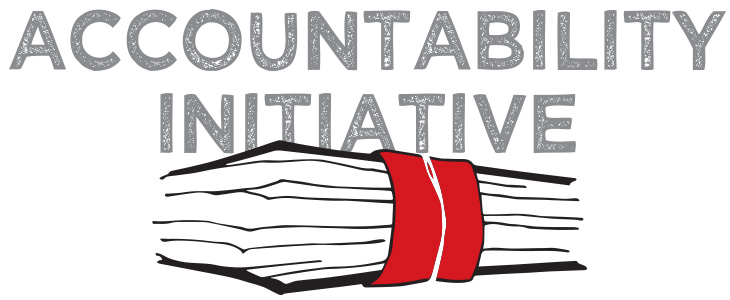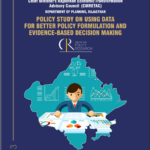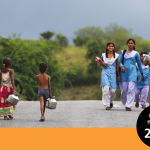
Lessons from a government school
1 October 2012
Education is the doorway to a better, more informed world. To what extent have we succeeded in opening this door for the children of India? According to a study in 2007 (by the Public Affairs Centre in Bangalore), there are as many as 76 % of rural households that send their children to government or government-aided schools in India. This implies that the progress in education would depend to a large extent on the functionality and quality standards of these schools. However, the quality of education in these schools leaves much to be desired as indicated in the HRD report on Education , the ASER report and various individual studies.1 According to the PAISA National Report 2012 only 6% of the designated 55,746 crores spent on education, goes towards improving the quality of education for students.2 A study by Kremer and Muralidharan in 2007 has revealed that only 1 in 4 government school teachers actually teach.3 Here, however, I am going to highlight how a government school has surpassed several of the above problems and is a shining example of the methods that can be used for sustained improvement. I have based this post on an extra-ordinary government school located outside Pune. The school remains open 365 days a year, has students excelling in academics and taking part in extra-curricular activities, and the community has played a key role in its success. The Indian Express talks about it in this article
1. Levels of commitment– “For the past 11 years, the school has stayed open every single day, and at least one of them has been present.” This level of commitment may be unrealistic but we can expect that if their job is to be in school 5 days a week then they should be there. According to the same study by Kremer and Muralidharan, absenteeism rate of government school teachers in India, at 25%, is amongst the highest in the world. Teacher’s absenteeism could have a significant impact on children’s presence and retention in schools
2. Schools and teachers should encourage learning– “Soon, parents from other villages started sending their children to the school.” A survey conducted by the NSSO in 2000 revealed that among factors leading to lack of enrolment of children, 50% of children and parents combined, responded with lack of interest towards going to/sending their children to school. A study conducted by Tilak in 2000 says that this lack of interest can be attributed to various factors including poverty and lack of good schooling facilities.4 It is upto the schools to do their bit: firstly by having enough number of qualified teachers and and good infrastructure, secondly by encouraging their students in all spheres so more new students enrol and have an all-round development.
3. Making sure the slow learners are not left behind– “And until the entire class has learnt a concept, we do not proceed further.” Some schools claim to be performing well, based on the fact that the 10th state board topper was from their school. What about the others? The teaching should be comprehensive to a majority of the class and extra attention should be paid to slow learners. The government should inculcate an attitude in schools and SMC’s, wherein the school bases their performance overall and not on the basis of a few students. In a class of 50, the question becomes, is it more valuable to the school to have 5 students who are academic toppers or 50 students who are all-rounders, i.e good in academics and extra-curricular activities.
4.Make the child an integral part of the school’s daily functioning-“The children who come in early in the morning clean the rooms and water the plants before attending their classes.” The children need to be made a part of the larger scheme of things in their school. To encourage them to come to school, there must be a change from merely being taught in classrooms and given homework to do at home. Change the attitude from just school to “my school”. They should be encouraged to care for plants and should be sensitised towards the environment. Northeast Affected Area Development Society (NEADS) is also carrying out a project on “Kitchen Gardening” sponsored by UNICEF to support the Mid-day meal programme functioning in the schools with a view to enrich the nutritional value of the meals, making the schools self-reliant, generate interest among the children to ensure active participation in developing and maintaining kitchen gardens and ensure effective use of the activities as experimental learning for the children.5
5.Schools should not just be about academic performance- “the children come to school during holidays too for extra-curricular activities like singing, dancing, theatre and elocution.” Every student has different levels of intelligence in different spheres. Howard Gardner talks about Multiple Intelligence.6 In India, statistics regarding performance of children in schools focus only on academic performance, essentially testing linguistic intelligence and logical mathematical intelligence: be it the PISA, HRD, DISE or the ASER report. There are others such as musical intelligence etc. A system needs to be created where all the children are able to be marked on various aspects beyond academic performance so that it gives an all-round indication of the child’s intelligence as opposed to one aspect of him/her.
6.Innovative methods, cultural activities will lead to academic performance also– “The school today, has a television with cable connection, an LCD monitor and computers. Whether it is simple multiplication, division or even saying the numbers backwards, the children are adept at it.” Mere rote-learning, as is emphasised in government schools in India is clearly not showing any improvement as NGO Pratham’s, Annual Status of Education Report (ASER) data reveals. At the national level, the percentage of children in Class 3-5 in government schools who are Class 2 text readers has hardly changed in the last three years: 35% in 2009, 37% in 2010, and 36% in 2011. ASER data also shows that the reading levels of children nearly 47% Class 5 students cannot read Class 2 texts, while over 63% of Class 3 students cannot subtract.7 When you have innovative learning methods such as using science-kits, stories, drama’s, radio’s, dividing children into groups and giving presentations, etc. children are less likely to feel bored and will learn enthusiastically. However, it will take some years before this can be tested empirically since they are a recent phenomenon.8
7.Involve the community– “They had to start from scratch when they shifted here from another government school in 2001. This was a dilapidated place with rats, no blackboards, no benches and no toilets The entire place had to be done up for which they got some money from the village committee.” Various NGO’s working on the ground are trying to get communities to be more actively involved. This comes as a refreshing change where the community contributed towards education of their own accord, with no external motivation or pressure. Laina Emmanuel here also talks about the importance of empowering communities because if they are involved, the standards of service delivery improve as accountability increases. Rajasthan is appointing Shiksha Karmi’s and has the Lok Jumbish project to enhance community participation in education.9
8. Nutrition not food, Empowering not teaching is the key– “Six-year-old Sachin, who was earlier diagnosed as malnourished, is now a healthy child, thanks to the meals at school. Students of their first batch are now in college and often come back to meet them. They also offer their services to help the school develop further.”As Avani Kapur has mentioned in her post here malnutrition is rampant in our country with over 37% children in India among Integrated Child Development Scheme (ICDS) beneficiaries having some form of it. Malnutrition is not necessarily due to lack of quantity but lack of nutrients. All schemes and schools must focus on nutrition and not just food in their meals. Schools should aim not just to take classes, but ensure they change the life of a child for the better and empower them. The same students, as can be seen here, will make a difference in other’s lives.
9. Spread the word and have a state govt. training format-“Teachers from more than 7,000 schools in the state have visited the school to witness this unique experiment.” The government should spread the word through pamphlets, presentations in every government school. This could be made a model government school at a national level. Each state government could facilitate under-performing schools every year from their state to visit this school. The Human Resource Development (HRD) Ministry, has approved the scheme of “setting up of 6000 Model Schools at block level as benchmark of excellence.”10Also, states could aim to add a substantial number of model-schools in their own state every year. We find bad news spreads fast enough. Why not the good?
10.Planning is important but will-power is also needed-“A school with no bell, no designated periods, no specific curriculum and open all 365 days. We do not have any planned periods. We also decide the subjects ourselves.” Some government programmes fail to deliver outcomes because of lack of proper planning, some fail because of lack of knowledge of ground realities and some fail because of lack of will to implement programmes. Here, above all, the will to make a difference in the lives of children has clearly been the driving force behind this school.
Simply because a school is a government school, it need not be viewed by the people through a prism of under-performance. They can and should perform well.
References:
1.Regarding poor quality of government schools:
a. http://images2.asercentre.org/Resources/Articles/art09-who-is-learning.pdf
b. http://cmdr.ac.in/editor_v51/assets/Mono-2.pdf
c. http://www.iitk.ac.in/3inetwork/html/reports/IIR2007/12-Rural%20Education.pdf
d. http://www.isid.ac.in/~pu/conference/dec_10_conf/Papers/RobertFrench.pdf
e.http://mhrd.gov.in/sites/upload_files/mhrd/files/StateEducationSecretariesConferenceSELJan12.pdf
2. http://www.accountabilityindia.in/article/state-report-cards/2475-paisa-report-2011
4.http://cmdr.ac.in/editor_v51/assets/Mono-2.pdf
5.http://www.educationforallinindia.com/best-practices-mid-day-meal-by-vprsraju.pdf
6. http://www.infed.org/thinkers/gardner.htm
7. http://pratham.org/images/Aser-2011-report.pdf
8.http://www.indiatogether.org/2007/jan/edu-newteach.htm
9.http://www.jstor.org/discover/10.2307/4410774?uid=3738256&uid=2&uid=4&sid=21101253863847





